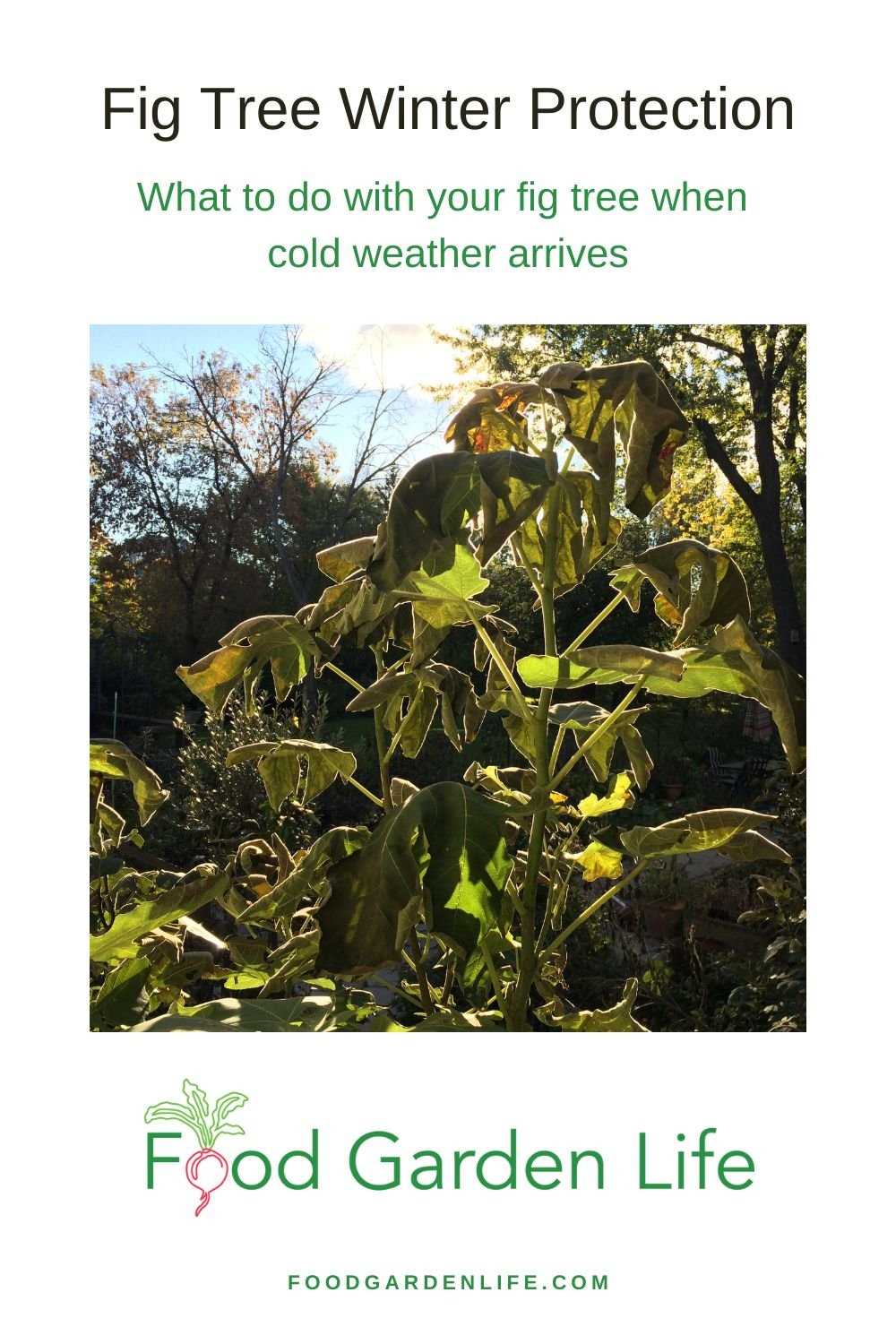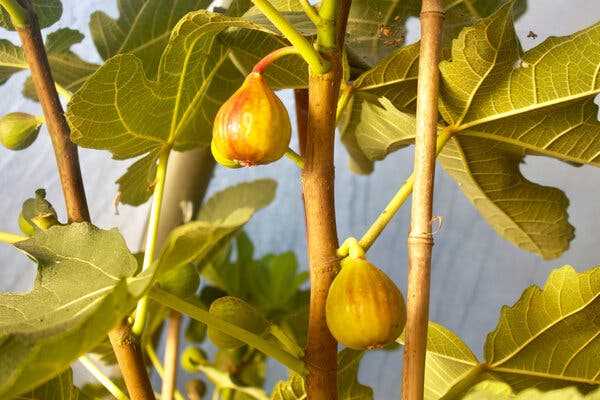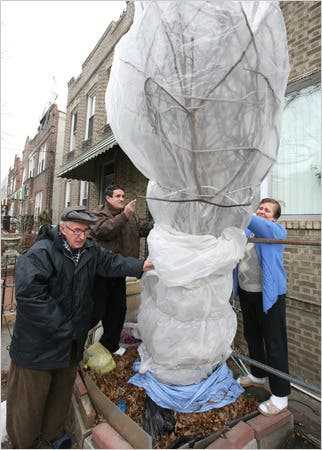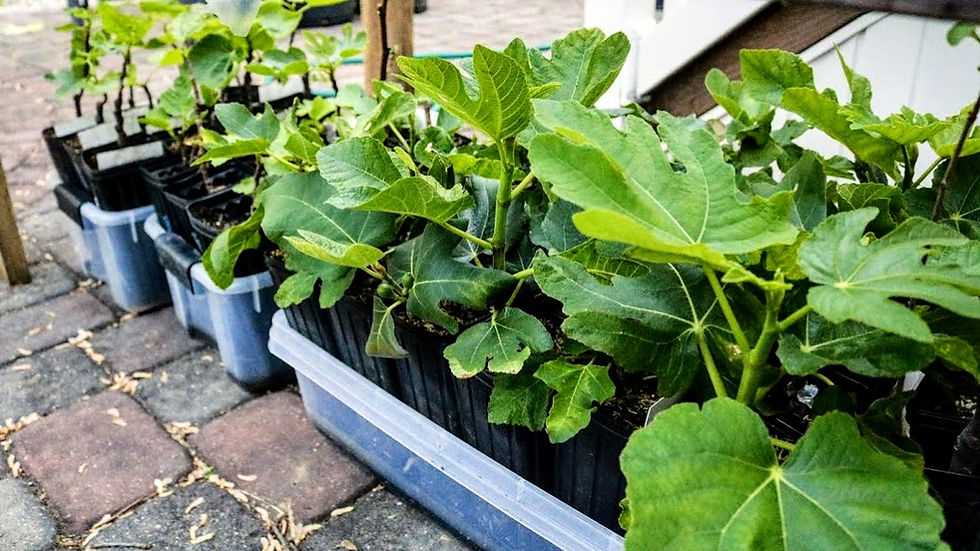- Protecting Figs in the Winter: Understanding the Need for Cover
- Why is covering necessary?
- What should you use to cover fig trees?
- How to cover fig trees:
- Other winter protection tips:
- Why fig trees need extra care in cold climates
- 1. Sensitivity to cold temperatures
- 2. Protection methods
- 3. Pruning and winterizing
- Factors that affect fig tree survival in winter
- The importance of choosing the right fig tree variety
- How to prepare your fig tree for winter
- 1. Pruning
- 2. Mulching
- 3. Wrapping
- 4. Watering
- 5. Sheltering
- 6. Monitoring
- Top tips for protecting fig trees in cold climates
- 1. Select a cold-hardy variety
- 2. Plant in a sheltered location
- 3. Mulch heavily
- 4. Wrap the branches
- 5. Create a windbreak
- 6. Water sparingly
- 7. Prune in early spring
- When to cover your fig tree and when it’s not necessary
- 1. Mild Winter
- 2. Established and Mature Tree
- 3. Sheltered Location
- 4. Frost-Resistant Varieties
- When to Cover Your Fig Tree
- Common mistakes to avoid when wintering figs
- Expert advice on maximizing fig tree survival in cold climates
- 1. Choosing the right cultivar
- 2. Planting in the right location
- 3. Providing winter protection
- 4. Insulating the root system
- 5. Watering and pruning
- 6. Monitoring temperature fluctuations
- 7. Overwintering in containers
- 8. Post-winter care
- Question-answer:
- Can fig trees survive in cold climates?
- How do I protect my fig tree during the winter?
- Do I need to cover my fig tree if the temperatures drop below freezing?
- Can I leave my fig tree uncovered during a mild winter?
- What happens if I don’t cover my fig tree during the winter?
- When is the best time to cover my fig tree for the winter?
- Video: Overwintering Fig Trees in Canada

Fig trees are a popular choice for gardeners, thanks to their delicate foliage and delicious fruit. However, for those who live in colder climates, winter can pose a challenge. Many gardeners wonder if they need to cover their fig trees during the winter months to protect them from the harsh temperatures and frost. In this article, we will provide expert advice on wintering figs in cold climates.
Fig trees are native to the Mediterranean region, where the climate is mild and the winters are relatively warm. In colder regions, fig trees are not as hardy and can suffer damage from freezing temperatures. However, with proper care and protection, it is possible to successfully winter fig trees in cold climates.
One option for protecting fig trees during the winter is to cover them with a protective layer, such as burlap or frost blankets. This can help insulate the tree and provide some protection against freezing temperatures. It is important to carefully wrap the tree, making sure all branches and foliage are covered.
Another option is to create a “microclimate” around the fig tree. This can be done by planting the tree in a sheltered location, such as against a south-facing wall or near a building. The heat absorbed by the wall or building during the day can help to keep the tree warm at night. Additionally, adding mulch around the base of the tree can help to insulate the roots.
Expert Tip: It is important to avoid over-watering fig trees during the winter months, as this can increase the risk of root rot. Instead, water sparingly and only when the soil is dry to the touch.
While covering fig trees and creating a microclimate can provide some protection, it is important to note that fig trees are still at risk of winter damage in extremely cold climates. In these cases, it may be necessary to consider other options, such as growing fig trees in containers that can be moved indoors during the winter months.
In conclusion, while fig trees can be successfully wintered in cold climates with proper care and protection, it is important to consider the specific conditions of your region. Consulting with local gardening experts or nursery specialists can provide valuable insight into the best methods for wintering figs in your area.
Protecting Figs in the Winter: Understanding the Need for Cover
Winter can be a challenging time for fig trees, especially in cold climates. If you live in an area with harsh winter temperatures, it’s important to take steps to protect your fig trees from the cold. One common method of protection is covering the trees.
Why is covering necessary?
Figs are native to warm climates and are not well adapted to cold temperatures. When exposed to frost and freezing temperatures, fig trees can suffer significant damage, including dieback or even death.
By covering your fig trees in the winter, you can help create a microclimate around them that provides some insulation against the cold. The cover acts as a barrier, helping to retain heat and protect the tree from freezing temperatures.
What should you use to cover fig trees?


There are several options for covering fig trees in the winter:
- Burlap: Burlap is a popular choice for covering fig trees. It is a breathable material that allows air and moisture to circulate while still providing some protection against the cold.
- Blankets or tarps: If you don’t have burlap, you can also use old blankets or tarps to cover your fig trees. Just make sure to secure them properly to prevent them from blowing off in strong winds.
How to cover fig trees:
When covering your fig trees, it’s important to do so correctly to ensure maximum protection. Here are some steps to follow:
- Wait until after the first frost to cover your fig trees. This will allow the tree to go into dormancy naturally.
- Wrap the cover around the tree, starting from the base and working your way up to the top. Make sure the cover is secure but not too tight, as this can restrict air circulation.
- If using burlap, make sure to leave a small opening at the top to allow air circulation.
- Secure the cover with rope or bungee cords to prevent it from coming loose in windy conditions.
Other winter protection tips:
In addition to covering your fig trees, there are a few other things you can do to help protect them during the winter:
- Wrap the trunk: Wrapping the trunk of the tree with burlap or tree wrap can provide added protection against freezing temperatures.
- Mulch: Applying a layer of mulch around the base of the tree can help insulate the roots and retain moisture.
- Watering: Before the ground freezes, make sure to give your fig trees a deep watering. This will help keep the roots hydrated throughout the winter.
By understanding the need for cover and taking the necessary steps to protect your fig trees in the winter, you can increase their chances of surviving and thriving in cold climates.
Why fig trees need extra care in cold climates
Fig trees are native to warm and tropical climates, which makes them more susceptible to cold temperatures. When exposed to freezing temperatures, the tender branches and roots of fig trees can be damaged or even killed.
In cold climates, it is necessary to provide extra care to protect fig trees from the harsh winter conditions. This includes covering the tree and insulating the soil to ensure its survival during the cold months.
1. Sensitivity to cold temperatures
Fig trees are not as hardy as other fruit trees, and their tolerance to cold temperatures can vary depending on the cultivar. Most fig trees cannot survive temperatures below 15°F (-9°C) without protection.
Even if the tree survives the winter, the cold can still have an impact on the fig crop. Cold temperatures can damage or kill the buds, resulting in a reduced harvest or no fruit at all.
2. Protection methods
To protect fig trees in cold climates, several methods can be employed:
- Winter covers: Use burlap or blankets to cover the entire tree, creating a barrier against the cold. This helps to retain heat and prevent freezing.
- Insulating materials: Surrounding the tree with insulating materials such as straw or pine needles can provide additional protection from freezing temperatures.
- Wrapping branches: Wrap the branches of the fig tree with burlap or tree wrap to protect them from winter winds and freezing temperatures.
- Protecting the root system: Insulate the soil around the tree with mulch or hay to keep the roots warm and prevent freezing.
3. Pruning and winterizing
Before winter sets in, it is important to prune fig trees to remove any dead or damaged branches. This promotes better airflow and reduces the risk of disease or pest infestation.
Additionally, winterizing the tree by applying a dormant oil spray and treating for pests can help to prevent issues during the cold months.
| Steps | Description |
|---|---|
| 1 | Prune the tree to remove dead or damaged branches. |
| 2 | Cover the tree with burlap or blankets. |
| 3 | Insulate the soil around the tree with mulch or hay. |
| 4 | Wrap the branches with burlap or tree wrap. |
| 5 | Apply a dormant oil spray and treat for pests. |
By taking these extra precautions, fig trees can have a better chance of surviving the cold temperatures in winter and continue to produce an abundant harvest in warmer seasons.
Factors that affect fig tree survival in winter
There are several factors that can affect the survival of fig trees in winter:
- Temperature: Fig trees are sensitive to cold temperatures, so the temperature is one of the most important factors to consider. If the temperature drops below a certain threshold, the fig tree can suffer from frost damage and die. The specific threshold temperature can vary depending on the variety of fig tree, but generally, temperatures below 20 degrees Fahrenheit (-6 degrees Celsius) can be harmful.
- Winter winds: Strong winds during winter can cause damage to fig trees. Cold winds can exacerbate the effects of low temperatures and lead to desiccation and injury to the branches and buds. It is recommended to plant fig trees in a location that offers some protection from strong winds, such as a sheltered area near a wall or fence.
- Snow and ice: Heavy snowfall or ice accumulation can also harm fig trees. The weight of the snow or ice can cause branches to bend or break. Additionally, as the snow or ice melts, it can saturate the soil around the roots, leading to waterlogged conditions that are unfavorable for the tree’s health.
- Moisture levels: Fig trees prefer well-drained soil and can be adversely affected by excessive moisture. In winter, when the ground is often saturated due to rain or snowmelt, it is important to ensure that the fig tree is not sitting in waterlogged conditions. Excess moisture can lead to root rot and other fungal diseases.
- Fig tree variety: Some varieties of fig trees are more cold-hardy than others. If you live in a colder climate, it is advisable to choose a variety that is known to be more tolerant of cold temperatures. Cold-hardy varieties are better able to withstand freezing temperatures and have a higher chance of survival in winter.
By considering these factors and taking appropriate measures, such as providing winter protection and selecting cold-hardy varieties, you can increase the chances of your fig tree surviving the winter in cold climates.
The importance of choosing the right fig tree variety
When it comes to wintering fig trees in cold climates, choosing the right variety is crucial. While some fig tree varieties can withstand freezing temperatures and thrive in colder regions, others are more sensitive to the cold and may require extra protection.
Cold-hardy varieties:
- Chicago Hardy: This variety is known for its exceptional cold tolerance and can survive temperatures as low as -10°F (-23°C) without any protective measures. It is an excellent choice for gardeners in extremely cold regions.
- Brown Turkey: Another cold-hardy variety, the Brown Turkey fig tree can withstand temperatures as low as 10°F (-12°C). It is a popular choice for home gardeners in colder climates.
- Celeste: Celeste fig trees are known for their ability to tolerate temperatures down to 0°F (-18°C). They are suitable for regions with mild winters.
Less cold-hardy varieties:
- Black Mission: This variety is more sensitive to freezing temperatures and may require additional protection in colder climates. It is best suited for regions with mild winters.
- White Genoa: While White Genoa fig trees can tolerate temperatures as low as 20°F (-7°C), they may still benefit from some form of winter protection in colder climates.
When choosing a fig tree variety for your garden, consider your climate and the average winter temperatures in your area. Consult with local nurseries or experienced gardeners to determine the best variety for your specific location. Additionally, make sure to provide proper care and winter protection for your fig trees to ensure their survival and productivity.
How to prepare your fig tree for winter
As winter approaches, it’s important to take steps to protect your fig tree from the cold temperatures. By preparing your fig tree properly, you can help ensure its survival and promote healthy growth in the spring.
1. Pruning
One of the first steps in preparing your fig tree for winter is pruning. Make sure to remove any dead or damaged branches, as well as any branches that are crossing or rubbing against each other. Pruning helps improve air circulation and prevents the spread of diseases.
2. Mulching


Mulching is an important step in protecting your fig tree’s roots during winter. Apply a layer of organic mulch, such as wood chips or straw, around the base of the tree. This will help insulate the roots from extreme temperatures and prevent frost damage.
3. Wrapping
In colder climates, wrapping your fig tree with burlap or frost blankets can provide an extra layer of protection. Start by loosely wrapping the trunk of the tree, and then continue up to the lower branches. Secure the wrapping with twine or clips, making sure not to wrap it too tightly to allow for air circulation.
4. Watering


Before the ground freezes, make sure to give your fig tree a deep watering. This will help hydrate the roots and provide much-needed moisture throughout the winter. However, be careful not to overwater, as excessive moisture can lead to root rot.
5. Sheltering
If possible, consider sheltering your fig tree in a protected area, such as against a wall or near larger plants or structures. This can provide additional insulation and protection from wind and cold drafts.
6. Monitoring


Throughout the winter, it’s important to monitor your fig tree for any signs of damage or stress. Check the branches, trunk, and foliage for signs of disease or pest infestation. If necessary, take appropriate measures to address any issues.
By following these steps, you can help ensure that your fig tree survives the winter and emerges healthy and ready for the next growing season.
Top tips for protecting fig trees in cold climates
1. Select a cold-hardy variety
When choosing a fig tree for your cold climate, opt for varieties that are known to be cold hardy. Some popular cold-hardy fig varieties include ‘Chicago Hardy’, ‘Brown Turkey’, and ‘Celeste’. These varieties are more likely to withstand winter conditions without significant damage.
2. Plant in a sheltered location
Locate your fig tree in a spot that is sheltered from harsh winter winds. This can help protect the tree from the drying effects of strong winds and reduce the risk of cold damage. Planting next to a wall or fence can provide additional protection.
3. Mulch heavily


Apply a layer of mulch around the base of the fig tree to insulate the roots and retain soil moisture. Use a thick layer of organic mulch, such as straw or wood chips, and extend it a few feet beyond the tree’s drip line. This will help protect the roots from freezing temperatures.
4. Wrap the branches
Wrap the branches of the fig tree with burlap or frost blankets before the first frost arrives. This will help protect the branches from freezing temperatures and reduce the risk of winter damage. Secure the wrap with twine or clothespins, making sure not to wrap it too tightly.
5. Create a windbreak
If your fig tree is exposed to strong winter winds, consider creating a temporary windbreak. This can be done using materials such as burlap, plastic sheeting, or snow fencing. Place the windbreak on the wind-facing side of the tree, leaving enough space for air circulation.
6. Water sparingly
During the winter months, reduce the amount of watering for your fig tree. Overwatering in cold weather can increase the risk of root rot and other cold-related issues. Only water the tree when the soil is dry to the touch.
7. Prune in early spring
Once the danger of frost has passed in early spring, prune any damaged or dead branches from your fig tree. This will help stimulate new growth and improve the overall health of the tree.
By following these tips, you can help protect your fig tree in cold climates and increase its chances of surviving the winter season. Remember to monitor the weather conditions and adjust your protective measures accordingly.
When to cover your fig tree and when it’s not necessary
Protecting your fig tree during winter months can be essential, especially in colder climates where frost and freezing temperatures are common. However, there are certain situations when covering your fig tree may not be necessary.
1. Mild Winter
If you live in a region with mild winters, where temperatures rarely drop below freezing, it may not be necessary to cover your fig tree. The tree can tolerate mild cold temperatures and will usually survive without any protection.
2. Established and Mature Tree
An established and mature fig tree has a better chance of surviving winter without protection. These trees have a well-developed root system and are more likely to withstand cold temperatures. However, if your fig tree is young and recently planted, it may benefit from extra protection during the winter.
3. Sheltered Location
If your fig tree is planted in a sheltered location, such as against a wall or near a building, it may be better protected from cold winds and frost. In such cases, covering the tree may not be necessary, as the natural surroundings provide some level of insulation.
4. Frost-Resistant Varieties
Some fig tree varieties are more frost-resistant than others. If you have a fig tree variety known for its cold hardiness, it may not require covering even in colder climates. These varieties have natural adaptations to withstand cold temperatures and may survive winter without extra protection.
When to Cover Your Fig Tree
Despite the situations mentioned above, there are still instances when it’s necessary to cover your fig tree:
- Extended periods of freezing temperatures: If your region experiences extended periods of freezing temperatures, covering your fig tree can help protect it from damage.
- Unestablished and young tree: If your fig tree is young and recently planted, it may benefit from extra protection during the winter until its root system develops.
- Extreme cold events: In rare cases where your region experiences extreme cold events, covering your fig tree is highly recommended to prevent damage to the tree.
When covering your fig tree, you can use various materials such as burlap, frost blankets, or even old blankets or towels. Ensure that the cover is secure and does not trap moisture, as this can lead to fungal diseases. It’s also important to remove the cover during periods of milder weather to prevent overheating and encourage air circulation.
By considering these factors, you can determine when it is necessary to cover your fig tree during the winter months and provide the necessary protection to keep it healthy and thriving.
Common mistakes to avoid when wintering figs
- Not providing adequate protection: One common mistake when wintering figs is not providing enough protection for the plants. Fig trees are not typically cold-hardy and can be damaged or killed by temperatures below 20 degrees Fahrenheit (-6 degrees Celsius). To protect figs from harsh winter conditions, it is important to provide insulation or cover the trees with blankets, burlap, or other protective materials.
- Delaying winter preparations: Another mistake is waiting too long to prepare fig trees for winter. It is important to start winterizing figs well before freezing temperatures arrive. Delaying preparations can result in damage to the trees and a higher risk of losing them. Ideally, winter preparations should be done in late autumn or early winter, well before the first frost.
- Overwatering: Overwatering is a common mistake that can be detrimental to fig trees during winter. Excess moisture in the soil can cause root rot and lead to the death of the plant. It is essential to maintain a well-draining soil and avoid excessive watering during the dormant period.
- Not pruning: Neglecting to prune fig trees before winter is another mistake to avoid. Pruning helps to shape the tree, remove dead or diseased branches, and promote airflow throughout the plant. Pruning before winter also helps to reduce the risk of winter damage and improves the overall health of the fig tree.
- Not applying mulch: Failing to apply mulch around the base of the fig tree is a mistake that can leave the roots vulnerable to freezing temperatures. Mulch helps to insulate the roots and protect them from extreme cold. It is recommended to apply a layer of mulch, such as straw or wood chips, around the base of the tree before winter.
By avoiding these common mistakes and providing proper protection, fig trees can successfully survive winter in cold climates. Remember to plan ahead, provide insulation, and take necessary precautions to ensure the health and survival of your fig trees during the winter months.
Expert advice on maximizing fig tree survival in cold climates
1. Choosing the right cultivar
When growing figs in cold climates, it’s important to select cultivars that are more cold-hardy. Some popular options include Celeste, Chicago Hardy, and Brunswick. These varieties can better withstand colder temperatures and have a higher chance of survival.
2. Planting in the right location
Find a sunny spot in your garden that offers some protection from strong winds. Figs thrive in well-drained soil, so make sure the area has good drainage. Avoid planting figs in low-lying areas where cold air can settle.
3. Providing winter protection
In colder climates, it’s helpful to provide additional protection for your fig tree during the winter months. One method is to wrap the tree in burlap or frost cloth, securing it with twine or stakes. This can help insulate the tree and protect it from frost.
4. Insulating the root system
The root system of your fig tree is also vulnerable to cold temperatures. Apply a generous layer of mulch around the base of the tree, extending at least a foot beyond the drip line. This will help insulate the roots and prevent freezing.
5. Watering and pruning
Reduce watering in the fall to help prepare the tree for winter. Additionally, prune any dead or damaged branches before winter sets in. This will help promote new growth in the spring and improve overall tree health.
6. Monitoring temperature fluctuations
Keep an eye on the weather forecast and be prepared to take additional protective measures if temperatures drop below freezing for an extended period. Consider using heat sources, such as light bulbs or heat cables, to provide extra warmth to the tree.
7. Overwintering in containers
If you’re growing figs in containers, it’s easier to protect them during the winter. Move the containers into a sheltered location, such as a garage or basement, where the temperature remains above freezing. Avoid overwatering during this period.
8. Post-winter care
Once winter is over, carefully remove any protective coverings from the fig tree. Gradually reintroduce it to outdoor conditions by placing it in a shaded area for a few days before moving it to its designated spot.
By following these expert tips, you can increase the likelihood of your fig tree’s survival in cold climates. Remember to adapt your approach based on your specific growing zone and the severity of winter weather in your area.
Question-answer:
Can fig trees survive in cold climates?
Fig trees are typically grown in warm climates, but certain varieties can withstand colder temperatures. In cold climates, it is important to protect the fig tree during the winter months to ensure its survival.
How do I protect my fig tree during the winter?
To protect your fig tree during the winter, you can cover it with a heavy layer of mulch and wrap it in burlap or a frost blanket. This will help insulate the tree and protect it from freezing temperatures.
Do I need to cover my fig tree if the temperatures drop below freezing?
Yes, it is highly recommended to cover your fig tree if the temperatures drop below freezing. Fig trees are not frost-resistant and can be seriously damaged or killed by freezing temperatures.
Can I leave my fig tree uncovered during a mild winter?
While fig trees can tolerate mild winters without much protection, it is still best to provide some form of cover. Even a thin layer of mulch can help insulate the roots and protect the tree from any unexpected cold snaps.
What happens if I don’t cover my fig tree during the winter?
If you don’t cover your fig tree during the winter, it is likely to experience frost damage and may even die. Cold temperatures can kill the tree’s branches and damage its roots, leading to permanent harm.
When is the best time to cover my fig tree for the winter?
The best time to cover your fig tree for the winter is after the first hard frost, when temperatures consistently stay below freezing. This will ensure that the tree is properly protected for the duration of the winter months.







